One of the challenges with the NVIDIA Grace CPU has been the memory configurations. As we covered in A Quick Introduction to the NVIDIA GH200 aka Grace Hopper, the memory capacity and bandwidth changed among a handful of fixed configurations. The new SOCAMM memory form factor, with Micron SOCAMM LPDDR5X memory dominating what we saw at NVIDIA GTC 2025, is going to be the new memory form factor to give NVIDIA Grace CPUs modular memory.
Micron SOCAMM Memory Powers Next-Gen NVIDIA Grace GB300 Servers
If you took a quick glance, you might think the Micron SOCAMM is a M.2 SSD. They are not quite the same direction, but I heard a few folks misidentify them at GTC last week. The basic idea is that they are modular LPDDR5X which means they can be replaced.
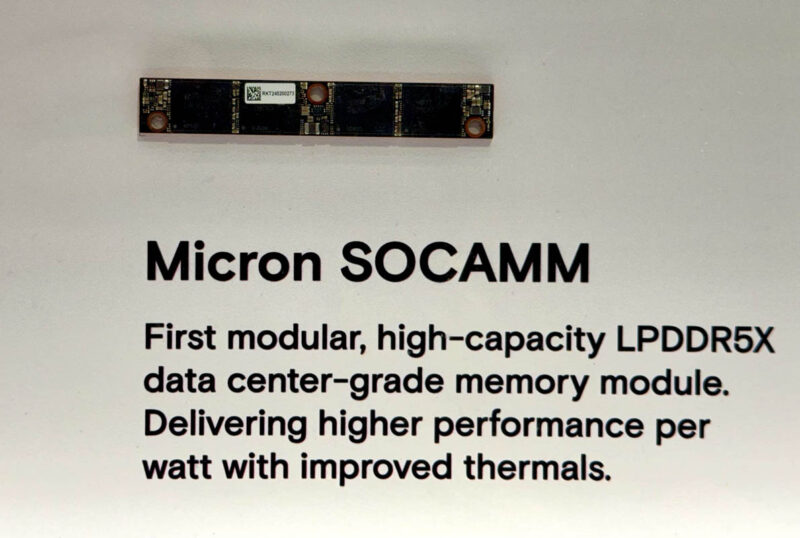
Frankly, the render of a module and the photo above does not make as much sense as seeing them next to a Grace CPU. First, here is a GB200 NVL4 which is when NVIDIA made the entire node a single board, but you can still see the two Grace CPUs with LPDDR5X memory on either side, mounted on the PCB. Note: since this is a NVL4 board, we do not have the connectors on the top.
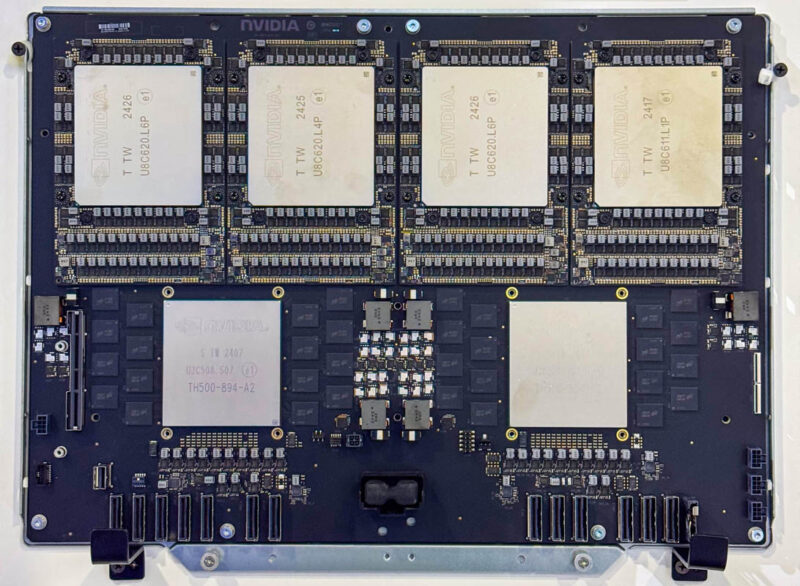
Here is the GB300 board. Here we can see the Grace CPUs on the bottom with the Micron SOCAMM memory.
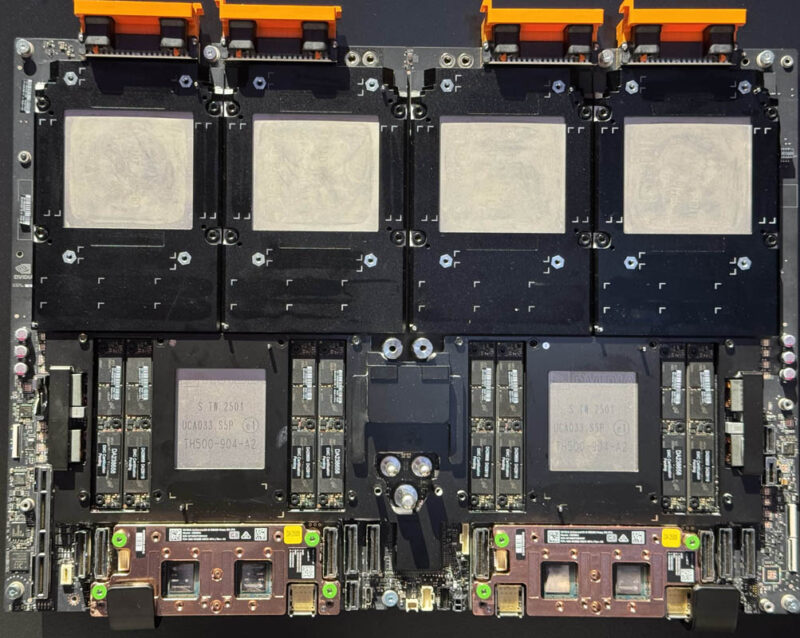
Just after a Q&A with Jensen, I managed to find his secret stash of products. There was one with the NVIDIA GB300 board but without package covers. This makes it a bit easier to see the SOCAMM next to the Grace CPUs.
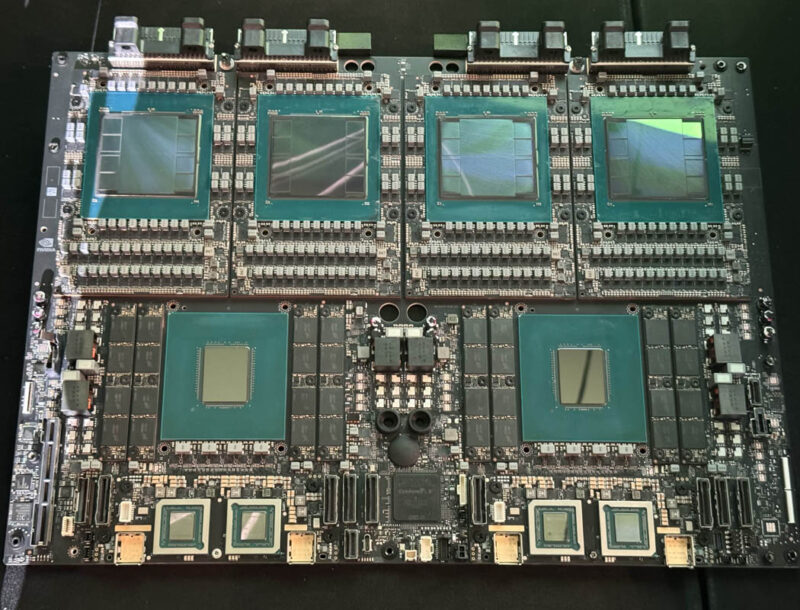
Here is a closer look at the SOCAMM modules with labels. Many of NVIDIA’s demo products lacked labels.
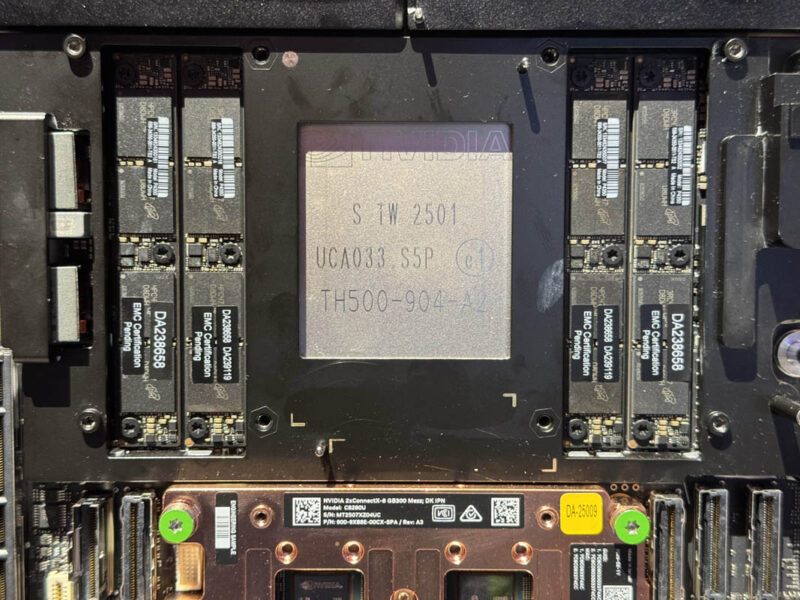
Here is the same without all of the support brackets and many of the packaging bits. You can also see the three screws that keep each memory module in place.

NVIDIA did not just make this change for the big GB300 platforms. It was also present on the workstation motherboard.
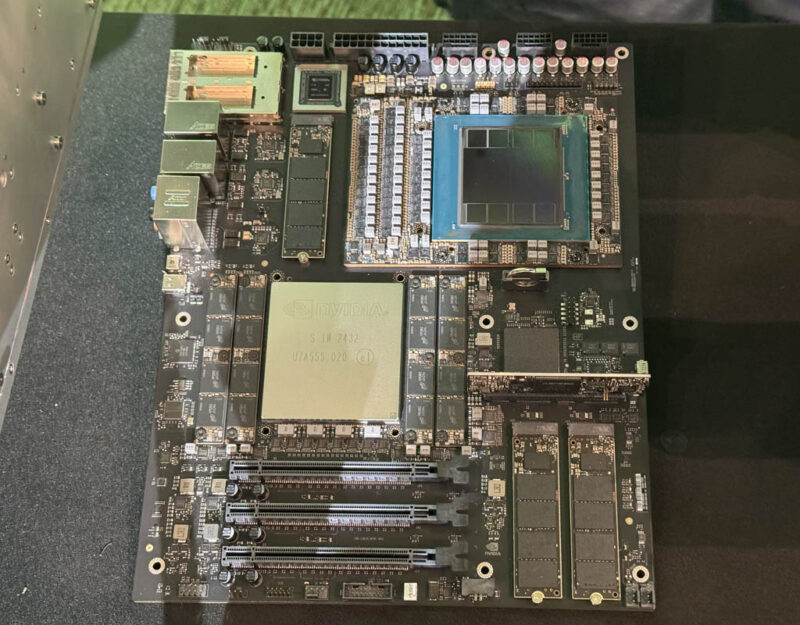
Looking at it from this view, it is pretty easy to see how folks confused them for M.2 SSDs. Still, the SOCAMMs appear well sized for NVIDIA’s Grace package.
Final Words
LPDDR5X memory is used in more places than just with NVIDIA Grace. It will be interesting to see if the modules make their way into other platforms. Having the ability to increase capacity without having to change an entire PCB assembly means that the configuration can happen later in the manufacturing process. In any event, these SOCAMMs were everywhere, so this is a clear direction from NVIDIA and Micron.

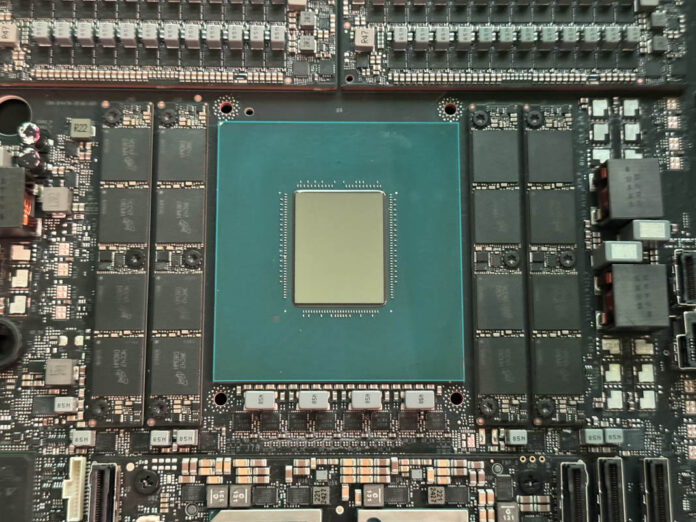
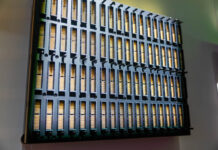
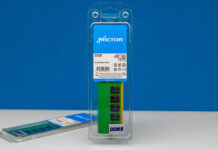

SOCAMM would be great for AMD apus.
Really neat. Though I do question why Nvidia don’t package the Grace/Blackwell CPUs (or any of their other CPUs and GPUs for that matter) in socketed modules more in line with AMD’s and Intel’s. Would be neat to see a Grace or Blackwell chip just by itself, especially the pin/pad side. I wonder how many pins those things actually have.
Latency, power efficiency and density. The same way apple put RAM next to CPU/GPU albeit different workload.
Except this literally disproves that. If they can do socketed memory for the new 300 series, it means that the argument that you have to package the memory with the CPU is a lie.
You can just as easily use the various CAMM solutions to get the performance and the ability to customize RAM capacity going forward.
@Punoesam
I don’t know if you were replying to me or not, but I was referring to the fact that AMD and Intel’s processors are in LGA packaging that fit into sockets. Nvidia isn’t doing that with any of their stuff as far as I can tell. Plus, we never, ever see the pad/pin sides of any of the GPU or CPU packages they use. Their chips are always on something like an OAM module or a PCIe card (nothing against either of those, mind you).
I think they’re low profile enough even for laptop usage which would be nice to get replaceable memory back in that segment. I get why the trade offs of portability vs. serviceability vs. performance vs. cost in that area but the only major down side here for SO-CAMM is cost.
It would be nice if Apple adopted this memory standard for their Pro, MAX and Ultra chips on their desktop products. One of the biggest negatives for the Mac Mini, Studio, Mac Pro would simply go away with this.
Using LP-DDR5X with SO-CAMM can provide good bandwidth so I can even see this being adopted for some GPU/AI products. Bandwidth per module is less than that of GDDR6/7 with the obvious solution to simply go with a wider bus. The memory bus width of the processors on these GB300 boards is 512 bit which is comparable to 256 bit width of moderately clocked GDDR6. That is good midrange GPU territory and wider does seem to be possible by adding SO-CAMM around another side of the processor (640 or 768 bit in aggregate). The bigger benefit would be higher memory capacity vs. GDDR6/7 in these arrangements which is a bottleneck currently.
SOCAMM will be good for Mackbook instead of soldered memory modules